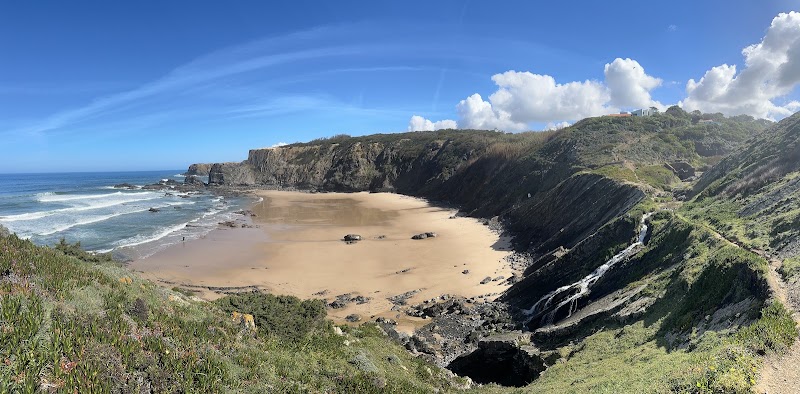Hiking the Rota Vicentina: Coastal Adventure and Wild Nature in Odemira, Portugal
The Rota Vicentina trail along Portugal’s Odemira coast promises breathtaking cliffs, windswept beaches, and immersion in wild Atlantic nature. Whether you’re a casual wanderer or a seasoned hiker, this coastal trek delivers vivid vistas and manageable challenges with smart preparation.
Start Early to Catch Cooler Air
Begin hiking in the morning to enjoy cooler temperatures and calmer winds before midday heat intensifies.
Hydration Is Non-Negotiable
Carry enough water to cover 15-20 km sections and refill whenever possible at marked villages or rest points.
Wear Shoes with Good Traction
The trail mixes sandy beaches with rocky paths; sturdy, grippy footwear prevents slips and improves comfort.
Respect the Coastal Environment
Stay on marked paths to protect fragile dunes and cliff vegetation, and pack out all trash to preserve this wild area.
Hiking the Rota Vicentina: Coastal Adventure and Wild Nature in Odemira, Portugal
Stretching along the rugged southwestern coast of Portugal, the Rota Vicentina trail invites hikers to engage with a coastline fiercely itself—raw, untrammeled, and pushy with wild Atlantic winds. Located in the Odemira municipality, this network of paths offers more than just a hike; it’s a dynamic travel dialogue with nature where cliffs dare your steps and the ocean murmurs encouragement beneath crashing waves.
The two main routes, the Historical Way and the Fishermen’s Trail, each run roughly 120 kilometers but differ dramatically in terrain and focus. The Fishermen’s Trail clings to cliff edges and beaches, boasting panoramic ocean views that expand as you traverse headlands and dunes. Expect moderate elevation swings, usually between 50 and 150 meters, with well-marked sandy and rocky paths. Depending on your pace, daily segments average roughly 15 to 20 kilometers, making multi-day hikes the norm.
Forest patches reclaim section interiors, offering reprieves beneath umbrella pines and cork oaks. Here, the earth feels alive underfoot, occasionally shaded where light filters through wind-strained branches. The Historical Way, slightly inland, pulls you into the quiet heart of villages, farmland, and rolling hills. This lends a broader picture of land and sea working side by side but with softer terrain and gentler climbs.
Practical considerations? Start early to avoid the midday sun, especially in summer, when the Atlantic breeze is both friend and challenge. Water is your steady companion; refill points are structured through villages or well-marked resting spots. Sturdy trekking shoes with good grip are necessary—loose stones and uneven sands catch even the most seasoned boots unaware.
Timing the hike matters: spring and fall deliver temperate weather and fewer crowds, while summer shines with long daylight but demands careful hydration. Winter is harsher, with rain and wind intensifying the trail’s character but adding a layer of risk.
All these elements combined make the Rota Vicentina a journey framed by nature’s moods and demands. It is not a route to conquer but to accompany—a living landscape shifting with every step. Before you go, pack maps, plan your distances, and respect the elements that hold this exquisite coastline so tightly. The reward is equally fierce: wild panoramas, quiet moments with the Atlantic, and a trail that feels as much about listening as moving forward.
Nearby Trips
All Adventures
Boat Charters
Water Activities
Adventures near Vila Nova de Milfontes
Discover the unique and memorable adventures that make Vila Nova de Milfontes special.
Frequently Asked Questions
How long does it take to hike the full Rota Vicentina?
The full trail covers around 120 km, typically completed in 5 to 8 days depending on fitness and daily distance preferences.
Is the trail suitable for beginner hikers?
While moderate in difficulty, sections are accessible to beginners with reasonable fitness levels if paced carefully and with adequate preparation.
Where can I stay during the hike?
Small towns like Vila Nova de Milfontes, Almograve, and Porto Covo offer guesthouses and small hotels to break up the journey.
Are parts of the trail accessible year-round?
Yes, but winter involves stronger winds and rain, which can make some coastal sections slick or hazardous—summer is busiest but driest.
What wildlife might I encounter on the Rota Vicentina?
Expect to see seabirds like ospreys and gulls, occasional dolphins offshore, and forest creatures such as rabbits and foxes inland.
Is it better to hike the Historical Way or Fishermen’s Trail?
It depends on your focus: The Fishermen’s Trail offers cliff and beach scenery with moderate climbs; the Historical Way moves inland through villages and farmland with gentler terrain.
Recommended Gear
Trekking Shoes with Grip
Essential for navigating mixed terrain, from sandy paths to rocky coastlines, protecting ankles and ensuring step security.
Reusable Water Bottle or Hydration System
Critical for staying hydrated during long stretches without convenient water sources; refill in villages or trail stops.
Lightweight Rain Jacket
Protects against sudden coastal showers and wind chill, keeping you dry without overheating.
Sun Protection – Hat and Sunscreen
The exposed cliffs and beaches offer little shade; strong UV protection reduces risk of sunburn and heat stress.
Local Insights
Hidden Gems
- "The viewpoint at Ponta dos Coelhos offers quieter, expansive views of the coastline away from main trail sections."
- "Small beach coves like Praia das Furnas reveal secluded spots where tides hold mysterious pools and calm waters."
Wildlife
- "Watch for the rare Bonelli’s eagle soaring overhead and the elusive Iberian lynx reported in protected inland reserves."
- "Marine life includes seasonal sightings of bottlenose dolphins following fishing boats near the shore."
History
"The Historical Way once linked small fishing villages and shepherd communities, reflecting centuries of coastal life and agricultural tradition."

